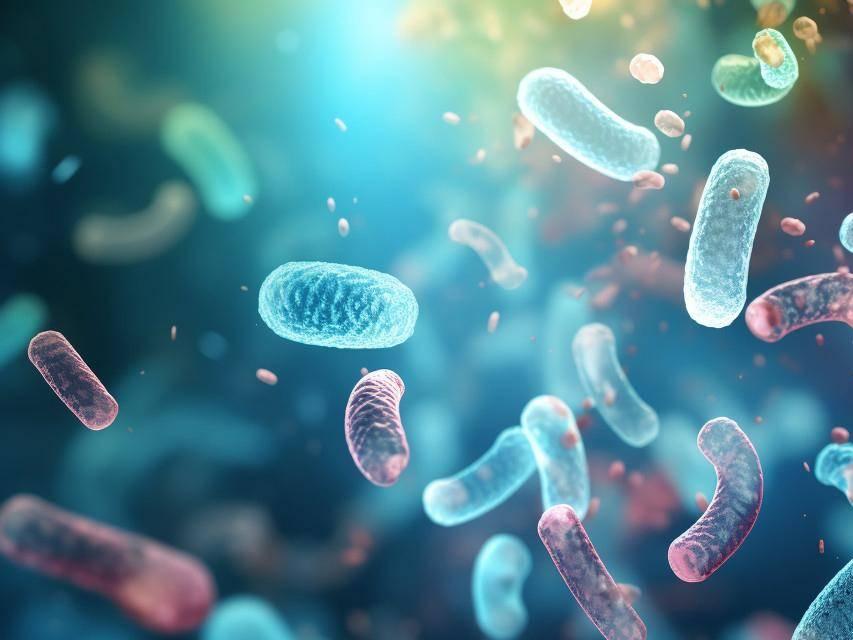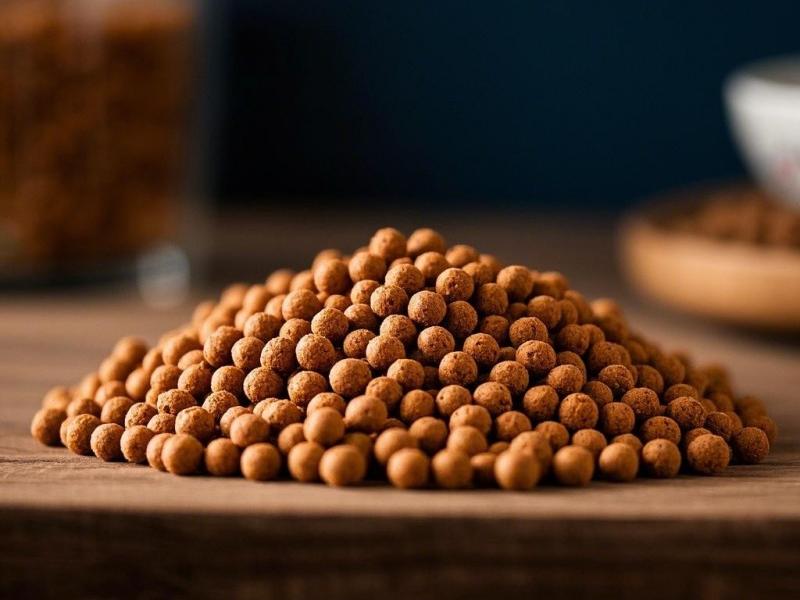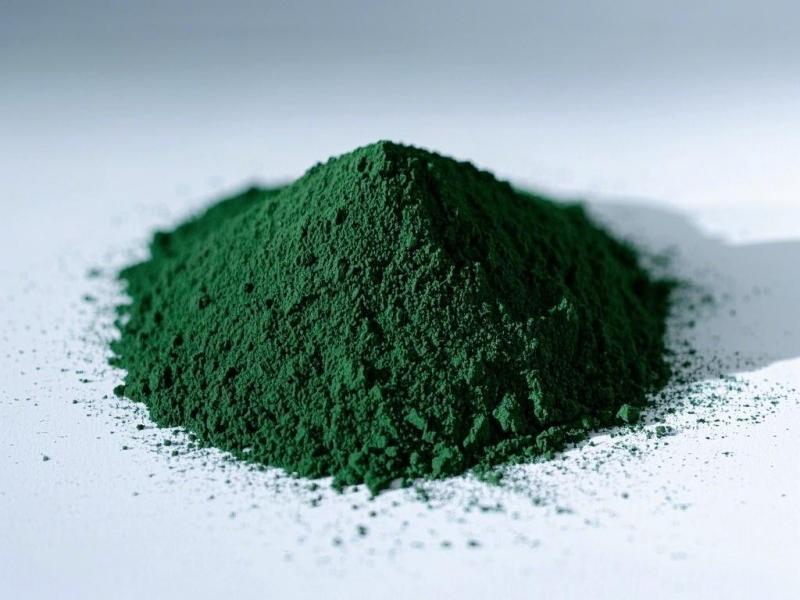Study on Spirulina Antioxidant
Modern radical theory research believes that free radicals are constantly produced during biological metabolism, and a dynamic balance is formed with the body's antioxidant system. When the protective function of the body's antioxidant balance system declines and the free radicals produced can no longer be balanced, oxidative stress can cause lipid peroxidation of cell membranes. This leads to a large accumulation of reactive oxygen species and peroxide products, causing irreversible damage to cells to varying degrees. Excess free radicals cause damage to the body and have been shown to be related to the occurrence and development of various diseases, including malaria, stroke, AIDS, heart disease, atherosclerosis, diabetes, cancer, gastric ulcers, etc. [1].
Spirulina is a genus of the family Oscillatoriaceae, order Oscillatoriales, and class Cyanophyta. There are two main varieties of spirulina produced domestically and abroad: S. plantensis and S. maxima. Spirulina is an ancient prokaryote. Since its discovery in 1940, scientists have never stopped studying it. Numerous domestic and foreign studies have shown that spirulina is one of the most comprehensive and balanced foods in terms of nutrients. Spirulina contains a variety of antioxidant substances and is a safe and reliable natural antioxidant. Spirulina can enhance the body's antioxidant capacity to fight diseases caused by lipid peroxidation triggered by reactive oxygen species and free radicals.
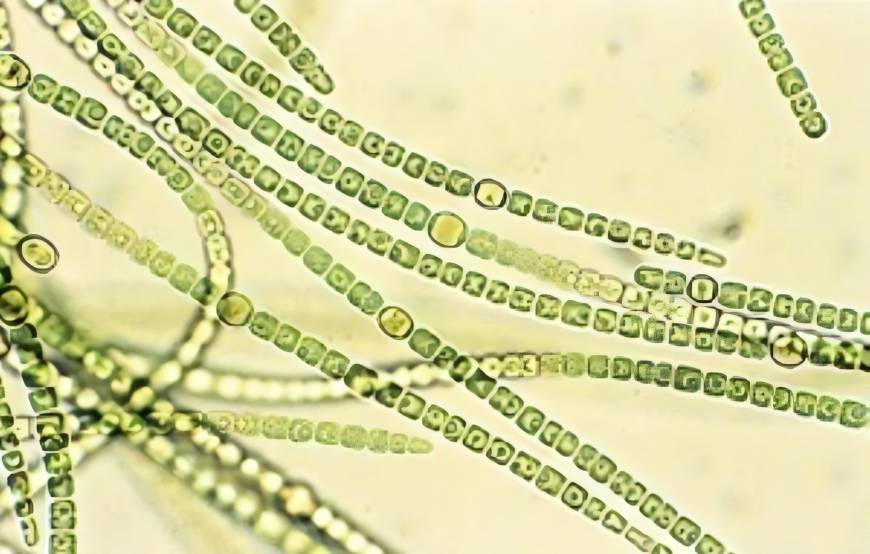
1 Antioxidant active ingredients in spirulina
Spirulina is rich in nutrients such as protein, vitamins, unsaturated fatty acids, polysaccharides and trace elements. The bioactive substances with antioxidant and anti-aging effects include spirulina polysaccharides (SP), unsaturated fatty acids, especially γ-linolenic acid (GLA), the endogenous enzyme superoxide dismutase (SOD), vitamins C and E, β-carotene (βC), and the trace element selenium (Se) [2].
2 In vitro antioxidant research on the active ingredients of spirulina
In vitro research on the antioxidant active substances of spirulina has a long history. In vitro research makes it easier to control the relevant factors and the results can be more intuitively reflected. Li Ling et al. [3] used the Fenton reaction and photochemical production of riboflavin to generate active free radicals ·OH (hydroxyl radicals) and ·O2− (superoxide anion radicals), and studied the in vitro scavenging of ·OH and ·O2− by spirulina and spirulina polysaccharides using spectrophotometry. The protective effect of spirulina and spirulina polysaccharides against lipid peroxidation induced by FeSO4 and against DNA oxidation damage caused by ·OH was also studied by thiobarbituric acid spectrophotometry. The experiments showed that spirulina and spirulina polysaccharides can effectively remove ·OH and ·O2-, and have a significant inhibitory effect on lipid peroxidation and ·OH oxidative damage to DNA. Zhao Feiyan et al. [4] also used ·OH determination kits and ·O2 determination kits to determine the in vitro scavenging ability of spirulina polysaccharides against free radicals. The results showed that in vitro, Spirulina polysaccharides have a significant scavenging effect on both ·OH and ·O2−, and the effect is most significant (P<0.05) at 1.0 mg/mL and 6 mg/mL.
It has been found that GLA in spirulina has a protective effect on endothelial cells. Kong Xiuqin et al. [5] cultured human umbilical vein endothelial cells ECV-304 in vitro and found that normally cultured ECV-304 cells were severely damaged after the addition of the damage agent polylysine. The cells shrank, most of the cells disintegrated, the intracellular lactate dehydrogenase (LDH) permeated, the malondialdehyde (MDA) content in the cell culture medium increased, and SOD activity decreased. However, after endothelial cells incubated with different concentrations of GLA for 24 h were added with poly-lysine, the cell morphology was basically normal, and most cells were arranged regularly. Compared with endothelial cells only added with a damage agent, the LDH level in the cell culture medium was lower, the MDA content was lower, and the SOD activity was higher.
Spirulina water extract has a protective effect on free radical-induced death of mouse fibroblasts [6], and when combined with ascorbic acid, it can also regulate lipid peroxidation in a goat liver model induced in vitro by the anticancer drug 5-fluorouracil (5-FU) [7]. Phycocyanin extracted from spirulina can inhibit iron-induced oxidative stress in SH-SY5Y neuroblastoma cells. Iron is an important mediator of oxidative stress and neurological decline. Phycocyanin can enhance the antioxidant enzymes glutathione peroxidase (GPx), selenium-dependent glutathione peroxidase (GPx-Se) and glutathione reductase (GR), and increases the level of reduced glutathione (GSH) in cells to resist lipid peroxidation caused by iron-induced oxidative stress. Spirulina extract phycocyanin interferes with the oxidation process in cells through related mechanisms, suggesting that spirulina can be used to treat diseases associated with increased reactive oxygen species and to develop treatments for some neurodegenerative diseases such as Alzheimer's disease and Parkinson's disease caused by iron metabolism disorders [8].

3 In vivo pharmacological studies of the antioxidant activity of spirulina
3.1 Effect on liver and kidney function
Selenium-enriched spirulina (Se-SP) has a good antioxidant protective effect on liver cells in rats after hepatectomy, and significantly upregulates the GPx activity of liver cells in hepatectomized rats [9]. Daily administration of spirulina to mice at different doses can increase the activity of SOD in mice with CCl4-induced liver damage and reduce their MDA content [10]. Phenolic compounds, the secondary metabolites in spirulina, have a protective effect on the liver in an acute toxicity test with CCl4 in rats, protecting the liver ultrastructure, improving lymphocyte infiltration, balloon-like degeneration and hepatocellular damage to irregular sheet-like tissue, and reducing endoplasmic reticulum expansion and cytoplasmic vacuolization [11].
Cyclophosphamide can cause nephrotoxicity and induce hemorrhagic cystitis in rats. Sinanoglu et al. [12] found that preventive administration of a certain amount of spirulina to rats can reduce MDA in kidney and bladder tissue, increase SOD and catalase (CAT) levels, and reduce damage to kidney and bladder tissue. One of the active ingredients in spirulina, phycocyanin, can improve the nephrotoxicity of the antineoplastic drug cisplatin. Lim et al. [13] conducted a study using human male renal cells C57BL6 and mice as subjects, respectively, and found that the mortality rate of human renal cells was significantly lower than that of the model group after the addition of phycocyanin. In mice given phycocyanin, blood urea nitrogen, serum creatinine, and renal histological damage, apoptotic cell death was also significantly improved compared to the model group. At the same time, Nesina et al. [14] found that spirulina combined with gentamicin can significantly reduce plasma nitrite levels and reduce acute gentamicin-induced renal tubular necrosis.

3.2 Effects on the nervous system
Tobon et al. [15] observed the effects of Spirulina maxima on the toxicity of 6-hydroxydopamine (6-OHDA) to the striatum of rats. After 20 days, the brain and striatum were removed and the indicators of toxicity, such as NO levels, reactive oxygen species (ROS) levels, lipid peroxidation and mitochondrial activity, were measured. The results showed that supplementation with spirulina maximus can protect dopamine neurotransmission in vivo by counteracting the neurotoxicity caused by the increase in free radicals caused by 6-OHDA.
In addition, valproic acid (VPA) is a potent inducer of neural tube defects in humans and mice, and its teratogenic effects are also accompanied by the potential production of free radicals. Some studies have shown that spirulina can increase the levels of SOD, CAT and GPx [16], thereby enhancing the body's antioxidant activity and reducing damage to the body.
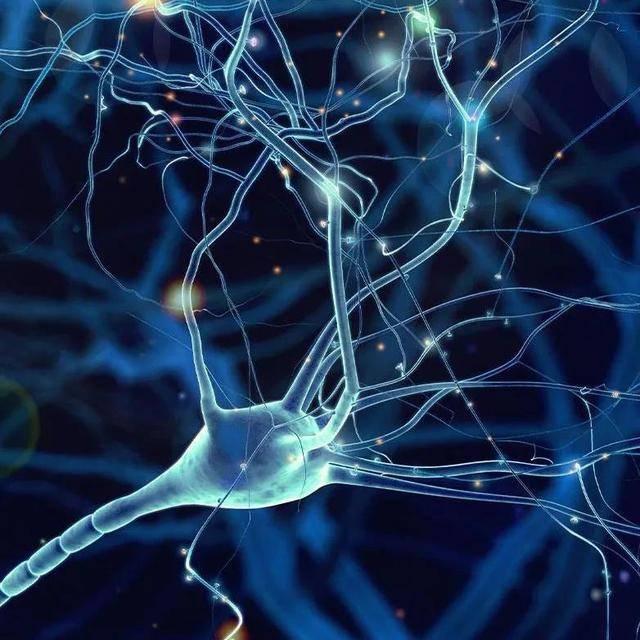
3.3 Effects on the reproductive system
Foreign studies have found that lead acetate can cause lead to accumulate in the bodies of pregnant rats, leading to lead poisoning in their offspring. Lead deposits in the brain and cerebellum cause brain tissue damage in newborn rats, and newborn rats lose body weight and have lower brain tissue protein content. Adding spirulina to the diet of pregnant rats can reduce the blood lead level of newborns, reduce tissue damage, increase brain protein content, increase the activity of antioxidant enzymes, and reduce lipid peroxidation caused by lead-induced oxidative stress [17].
Banji et al. [18] found that excessive fluoride intake in rats caused behavioral abnormalities in the offspring, thyroid dysfunction and increased oxidative stress. Spirulina enhanced the displacement of fluoride, promoted the formation of antioxidants, improved behavioral abnormalities in the offspring, and protected the Puken野 cells. Supplementing spirulina during pregnancy can reduce the risk of fluorine poisoning in the offspring. Spirulina can reduce the MDA content of rat tissues caused by CCl4 ovarian damage, increase SOD and CAT activity, and protect follicles and ovarian tissues [19]. A certain dose of spirulina can significantly reduce the rate of malformations in the offspring of pregnant rats, improve chromosomal abnormalities caused by chromium toxicity, and also improve mercury chloride-induced testicular damage and deterioration of sperm quality in rats [20-21]. Spirulina maxima and its extracts can be used as an anti-teratogen to reduce the risk of teratogenicity in rat offspring induced by the antitumor drug hydroxyurea (HU) by reducing the production of excessive ROS in the body [22].
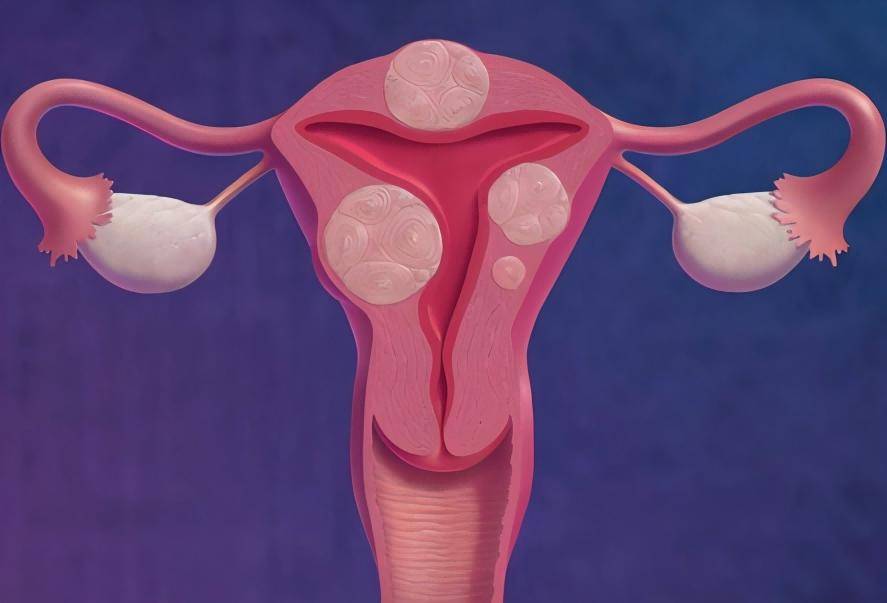
3.4 Effects on the cardiovascular system
Energy metabolism disorders and excessive production of reactive oxygen species are associated with brain damage and ischemia. Epidemiological studies have shown that the intake of a Mediterranean-style diet is negatively correlated with the risk of stroke, cardiovascular disease and cancer. Spirulina is a widely used protein supplement and antioxidant. A certain dose of spirulina reversed the MDA content, SOD, CAT and GSH in the rat brain, indicating that spirulina has a protective effect on cerebral ischemia damage [23].
Kong Xiuqin et al. [24] fed normal rats and rats fed a high-fat diet that had developed hyperlipidemia with feed containing 0.25%, 0.5% and 1% γ-linolenic acid methyl ester (GLAME) extracted from spirulina for 4 weeks, and measured the blood lipids, liver lipids, and plasma and liver MDA levels of each rat. The results showed that GLAME significantly reduced the plasma total cholesterol (TC), triglycerides (TG), low-density lipoprotein (LDL-C) levels and atherosclerosis index (AI) in normal rats and rats with hyperlipidemia, and increased high-density lipoprotein (HDL-C) levels and HDL-C/TC. can reduce the MDA content in the plasma and liver and the liver cholesterol content of normal rats and rats with hyperlipidemia, and reduce the liver mass and liver index (liver mass/body mass) of rats with hyperlipidemia, but has no significant effect on the liver mass and liver index of normal rats. This effect may be related to the fact that GLA is more highly unsaturated and is oxidized first, thereby protecting cell membranes and reducing the damage to endothelial cells caused by polylysine.
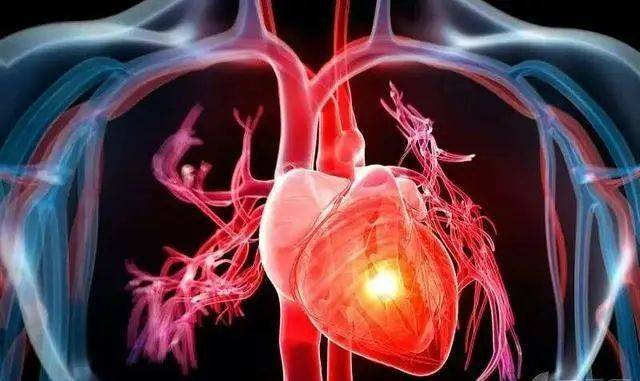
3.4 Other
Gupta et al. [25] found that spirulina extract phycobiliproteins can treat thymus atrophy induced by tributyltin (TBT) in rats, and phycocyanin can reduce TBT-induced oxidative stress-mediated thymus cell apoptosis in rats. Diabetic complications are caused by the high-free radical reaction of tetraoxypyrimidine, which specifically destroys pancreatic islet B cells. Spirulina and its extract glycoprotein can resist the high-free radical reaction, protect pancreatic islet B cells, and thus exert a hypoglycemic effect [26]. It has also been found that spirulina has an effect against herpes virus and HIV virus, and that it is related to spirulina's ability to reduce free radicals in the body and resist excessive oxidation of the body [27-29].
4 Clinical research and application of spirulina's antioxidant activity
Chen Jiangsheng et al. [30] investigated the changes in serum MDA and SOD in patients with pneumoconiosis before and after taking spirulina medication. A direct barbituric acid sulfate assay and xanthine oxidase assay were used to determine the changes in serum MDA and SOD levels before and after treatment with spirulina in 30 cases of pneumoconiosis. It was found that the serum MDA content of pneumoconiosis patients after taking spirulina for 1 month was significantly lower than that of pneumoconiosis patients who did not take spirulina (P<0.01). The activity of serum SOD was significantly higher after taking spirulina than before (P<0.01). After taking spirulina, the peroxidation of lipids and the production of free radicals in the alveolar macrophage biofilm were reduced, and the depletion of the body's SOD scavenger was reduced.
Spirulina as a nutritional supplement can improve the body's exercise tolerance.
Kalafati et al. [31] conducted a double-blind, randomized, placebo-controlled parallel crossover study on nine moderately trained men, which showed that spirulina supplementation can promote fat oxidation, enhance exercise tolerance, increase GSH concentration, and reduce exercise-induced increases in lipid peroxidation. A study conducted in healthy elderly volunteers found that spirulina supplementation at a dose of 8 g per day for 16 weeks significantly reduced cholesterol levels (P < 0.05) and increased plasma interleukin-2 (IL-2) levels, while reducing plasma interleukin-6 (IL-6) levels in male subjects. No significant changes were observed in the placebo group (P < 0.05). In female subjects, IL-2 levels and SOD activity increased (P < 0.05), and total cholesterol also decreased significantly [32]. This study also showed that spirulina has a good regulatory effect on blood lipid regulation, immune enhancement and antioxidant capacity, and is suitable as a functional food for healthy elderly people.
5 Summary and outlook
In recent years, spirulina antioxidant research has been carried out on multiple levels and in many ways. However, many of the mechanisms of action still need to be further elucidated. Spirulina's nutritional value and biological activity have gradually been recognized by people. Spirulina research will become more extensive and in-depth. Some studies have shown that the use of high-density Se-SP cells to prepare nano-selenium (Nano-Se) through biotransformation has stronger antioxidant activity [33]. Zinc-enriched spirulina combined with acerola has a significant effect of enhancing antioxidant activity, or the recombinant spirulina phycocyanin gene [34-35] can be expressed in E. coli to reduce the cost and time of phycocyanin production, which is also of great benefit to promoting the research and development and utilization of spirulina antioxidants. Spirulina tablets, capsules, nutrient solutions, nutritional powders, drinks, spirulina noodles, spirulina-filled chocolates and other pharmaceuticals and functional foods have been launched domestically and abroad.
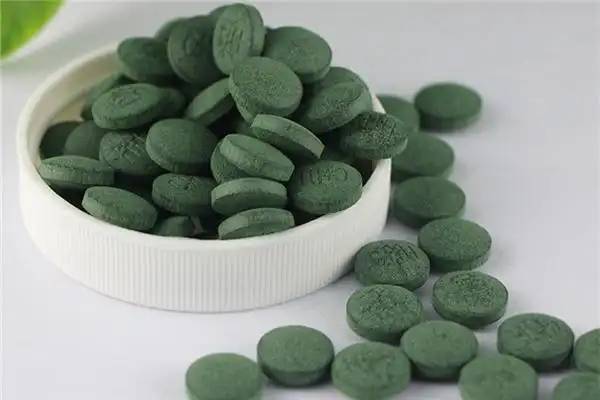
From the current state of spirulina research at home and abroad, it can be seen that most research on the activity of spirulina remains at the laboratory stage, and there is relatively little research that combines clinical studies. There has been relatively more research on the extraction and activity of important active ingredients such as phycocyanin and algin. However, the extraction and separation methods are cumbersome, costly or involve the introduction of toxic organic solvents, which are all bottlenecks restricting the in-depth development and large-scale production of spirulina. The incident in March 2012 that shocked the country, in which spirulina was found to exceed the standard for the heavy metal lead, also sounded the alarm on the safety of spirulina products. The enrichment effect of spirulina on heavy metals is a double-edged sword. Some studies have shown that spirulina can improve the dysfunction of the body caused by excessive intake of heavy metals and has a detoxifying effect on heavy metals, but it can also enrich heavy metals in polluted water [36-38]. It is hoped that spirulina can be more fully and practically developed and that it can truly benefit human health.
Reference:
[1] TEZIL T,BASAGA H.Modulation of cell death in age-related diseases[J / OL].Curr Pharm Des,( 2013-09-27) [2014-01- 08].http: / /www.ncbi.nlm.nih.gov / pubmed /24079770.
[2] Zheng Jing. Research on the chemical composition and biological activity of spirulina [J]. Science and Technology Information, 2009(7): 24-27.
[3] Li Ling, Gao Yuntao, Dai Yun. Research on the in vitro scavenging of active oxygen and antioxidant effects of spirulina and spirulina polysaccharides [J]. Chemical and Biological Engineering, 2007, 24(3): 55-57.
[4] Zhao Feiyan, Ao Changjin, Du Ling, et al. Research on the antioxidant effect of crude polysaccharides from Spirulina platensis [J]. Heilongjiang Animal Husbandry and Veterinary Medicine, 2010(17), 14-16.
[5] Kong Xiuqin. Isolation and purification of γ-linolenic acid methyl ester from spirulina and its effect on regulating lipid metabolism and protecting endothelial cells [D]. Nanjing: Nanjing University, 2003.
[6]CHU W L,LIM Y W,RADHAKRISHNAN A K,et al.Protective effect of aqueous extract from Spirulina platensis against cell death induced by free radicals [J / OL].BMC Complement Altern Med,( 2010-09-21) [2014-01-08].
[7]RAY S,ROY K.SENGUPTA C.In vitro evaluation of protective effects of ascorbic acid and water extract of Spirulina plantesis (blue green algae) on 5-fluorouracil-induced lipid peroxidation [J].Acta Pol Pharm,2007,64(4) : 335-344.
[8 ] PALOMA B B ,ENRIQUE P E ,FRESNO V A M.Neuroprotection by Spirulina platensis protean extract and phycocyanin against iron-induced toxicity in SH-SY5Y neuroblastoma cells[J].Toxicol Vitro,2008,22 ( 6 ) : 1496- 1502.
[9] Huang Feng, Huang Zhi, Yang Fang. The antioxidant effect of selenium-rich spirulina on liver cells in rats with hepatectomy [J]. Journal of Jinan University: Medical Sciences, 2006, 27(2): 209-213.
[10] Ding Jingjing, Jin Anna, Shi Lili. Effect of spirulina on the antioxidant capacity of liver tissue in mice with chronic liver damage [J]. Lake Science, 2004, 1 (4): 343-348.
[11]KEPEKCI R A,POLAT S,CELIK A,et al.Protective effect of Spirulina platensis enriched in phenolic compounds against hepatotoxicity induced by CCl4 [J].Food Chem,2013,141 (3) : 1972-1979.
[12] SINANOGLU O,YENER A N,EKICI S,et al.The protective effects of Spirulina in cyclophosphamide induced nephrotoxicity and urotoxicity in rats[J].Urology,2012,80(6) : 1392.
[13] LIM B J,JEONG J Y,CHANG Y K,et al.C-phycocyanin attenuates cisplatin-induced nephrotoxicity in mice[J].Ren Fail,2012,34(7) : 892-900.
[14] NESINA A,ESAD C,EMINA N I,et al. Spirulina platensis protects against renal injury in rats with gentamicin-induced acute tubular necrosis[J].Bosn J Basic Med Sci,2008,8 (4) : 331-336.
[15]TOBON V J C,VICTORIA P S,LILIANA M,et al.Antioxidant effect of Spirulina (Arthrospira) maxima in a neurotoxic model caused by 6-OHDA in the rat striatum[J].J Neural Transm, 2013,120(8) : 1179-1189.
[16] GERARDO N E C,NORMA P C,RICARDO P P,et al.Spirulina(Arthrospira) protects against valproic acid-induced neural tube defects in mice[J].J Med Food,2012,15 ( 12 ) : 1103-1108.
[17]MANEL G,FATMA G K,BRITTANY M C,et al.Spirulina or dandelion-enriched diet of mothers alleviates lead-induced damages in brain and cerebellum of newborn rats[J].Food Chem Toxicol,2012,50(7) : 2303-2310.
[18]BANJI D,BANJI O J,PRATUSHA N G,et al.Investigation on the role of Spirulina platensis in ameliorating behavioural changes,thyroid dysfunction and oxidative stress in offspring of pregnant rats exposed to fluoride[J].Food Chem,2013,140 ( 1 /2) : 321-331.
[19] YENER N A,SINANOGLU O,ILTER E,et al.Effects of Spirulina on cyclophosphamide-induced ovarian toxicity in rats : biochemical and histomorphometric evaluation of the ovary [J / OL].Biochem Res Int,( 2013-5-9) [2014-1-8].http: / / www.hindawi.com /journals / bri /2013 /764262 /.
[20]NORMA P C,GERARDO E C,DOLORES H N,et al.Spirulina ( Arthrospira ) protects against cadmium-induced teratogenic damage in mice[J].J Med Food,2011,14(4) : 398-404.
[21] GABER E D,BASHANDY S A,ALHAZZA I M,et al.Improvement of mercuric chloride-induced testis injuries and sperm quality deteriorations by Spirulina platensis in rats[J]. PLoS One,2013,8(3) : 1-9.
[22] JORGE V S,EVA R G,ANGELICA M V,et al.Spirulina maxima and its protein extract protect against hydroxyurea- teratogenic insult in mice[J].Food Chem Toxicol,2009,47 ( 11) : 2785-2789.
[23] THAAKUR S,SRAVANTHI R. Neuroprotective effect of Spirulina in cerebral ischemia-reperfusion injury in rats[J].J Neural Transm,2010,117(9) : 1083-1091.
[24] Kong Xiuqin, Dai Weimin, Ge Haitao, et al. Research on the effect of spirulina-derived gamma-linolenic acid methyl ester on blood lipids [J]. Chinese Journal of Marine Drugs, 2003, 22(6): 30-34.
[25]GUPTA M,DWIVEDI U N,KHANDELWAL S.C-Phycocyanin :an effective protective agent against thymic atrophy by tributyltin[J].Toxicol Lett,2011,204( 1) : 2-11.
[26] Feng Renqing, Zhang Fei, Tang Qingping, et al. Effect of spirulina extract on blood glucose in diabetic mice [J]. Journal of Nutrition, 2005, 27(3): 263-264.
[27] HERNANDEZ C A,NIEVES I,MECKES M,et al.Antiviral activity of Spirulina maxima against herpes simplex virus type2 [J].Antiviral Res,2002,56(3) : 279-285.
[28]YAMANI E,KABA M J,MOUALA C,et al.Use of Spirulina supplement for nutritional management of HIV-infected patients: study in Bangui,Central African Republic[J].Med Trop (Mars) ,2009,69( 1) : 66-70.
[29] Yu Hong, Zhang Wenqing, Zhao Lei, et al. Experimental study on the antiviral effect of spirulina platensis polysaccharides [J]. Chinese Journal of Oceanic Drugs, 2006, 25 (5): 19-24.
[30] Chen Jiangsheng, He Jimou, Owen Bin. Changes in serum malondialdehyde and superoxide dismutase before and after spirulina consumption in patients with pneumoconiosis [J]. Chinese Occupational Medicine, 2005, 32(3): 45-46.
[31] KALAFATI M,JAMURTAS A Z,NIKOLAIDIS M G,et al.Ergogenic and antioxidant effects of Spirulina supplementation in humans[J].Med Sci Sports Exerc,2010,42 ( 1) : 142-151.
[32]PARK H J,LEE Y J,RYU H K,et al.A randomized double- blind,placebo-controlled study to establish the effects of Spirulina in elderly Koreans[J].Ann Nutr Metab,2008,52 (4) : 322-328.
[33] DARTSCH P C.Antioxidant potential of selected Spirulina platensis preparations[J].Phytother Res,2008,22(5) :627-633.
[34] PLEONSIL P,SOOGARUN S,SUWANWONG Y.Anti-oxidant activity of holo- and apo-c-phycocyanin and their protective effects on human erythrocytes[J].Int J Biol Macromol,2013, 60:393-398.
[35] Jin Xingyuan, Zhou Yonglin, Ren Luoyan. Preparation of spirulina transformed nanoelement selenium and preliminary study of its in vitro free radical scavenging activity [J]. Chinese Journal of Bioengineering, 2012, 32(1): 30-35.
[36] Yang Zhanjun, Wang Changjiang, Ding Huaiyu, et al. The effect of spirulina on inhibiting lead-induced learning and memory impairment [J]. Journal of Nutrition, 2009, 31 (04): 409-410.[37] CLINEI D M,MAIT C D,ANDREIA D R , et al.Chromium ( Ⅵ) biosorption and removal of chemical oxygen demand by Spirulina platensis from wastewater-supplemented culture medium[J].J Environ Sci Health A Tox Hazard Subst Environ Eng,2012,47 ( 12) : 1818-1824.
[38] GAGRAI M K,DAS C,GOLDER A K.Reduction of Cr( Ⅵ)
into Cr( Ⅲ) by Spirulina dead biomass in aqueous solution : kinetic studies[J].Chemosphere,2013,93 (7) : 1366-1371.


 English
English French
French Spanish
Spanish Russian
Russian Korean
Korean Japanese
Japanese